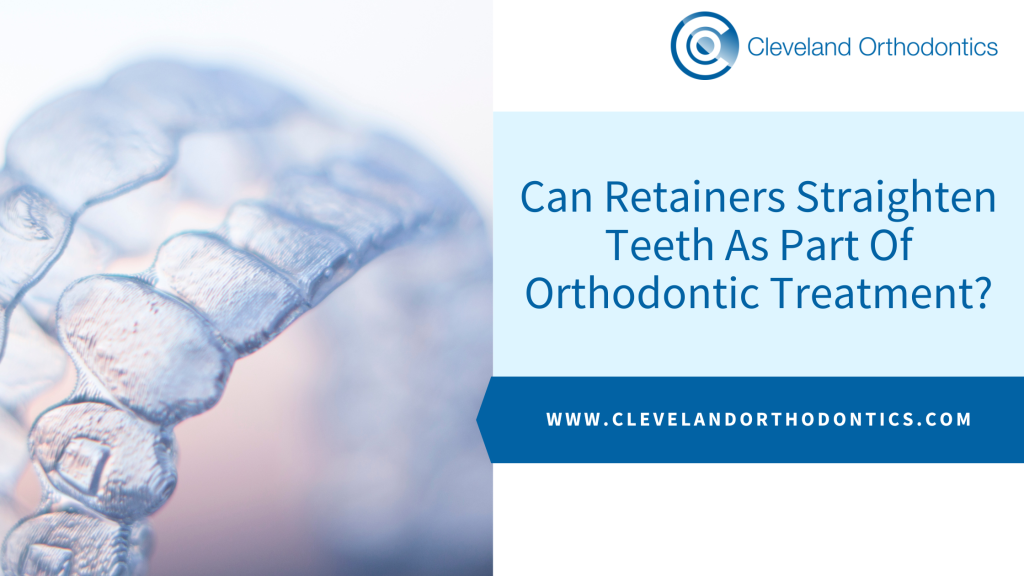
If you have recently finished or are about to complete your orthodontic treatment, you may be familiar with the term orthodontic retainers. Orthodontic retainers are removable or fixed appliances worn after one has completed their treatment with braces or clear aligners. The purpose of orthodontic retainers is to consolidate orthodontic treatment, i.e., to prevent the teeth from moving back to their previous positions.
But how do retainers work? Do they also straighten teeth like braces or aligners? If you are searching for an answer to these questions, look no more! This blog will provide answer all your questions about orthodontic treatment and retainers. So, read on to find out more about dental retainers.
What Can I Expect At My First Orthodontist Appointment?
Many parents believe they should take their kids for an orthodontic checkup if they observe tooth alignment-related issues. However, this is not the right approach. Instead, the American Association of Orthodontists recommends that parents bring their kids for an orthodontic checkup no later than their seventh birthday. This allows the orthodontist to detect and treat any underlying issues before they require long-term or expensive treatment.
During your child’s first orthodontic visit, the dentist will perform a detailed clinical examination of all their teeth. They will also:
- Look at the x-ray images of their teeth
- Visualise their study tooth models
- Search for any underlying issue
- Take non-invasive measures to treat it in its early stages
In this way, orthodontic problems diagnosed and treated earlier in life do not require extensive treatment with dental braces.
What Are The Benefits Of Using Retainers Instead Of Braces?
Dental braces and retainers are two separate orthodontic appliances with different uses. For example, braces are “active” appliances, meaning they will exert force on the teeth to move them. On the other hand, retainers – whether fixed or removable – are passive appliances. This means that retainers will not exert pressure on your teeth. Instead, they are worn to prevent the unnecessary movement of the teeth towards their previous positions. So, we cannot compare braces and retainers regarding their advantages and disadvantages; both are necessary for an optimal aesthetic and functional outcome of orthodontic treatment.
Will I Do Any Damage By Forcing My Retainer Over My Teeth?
Your dentist will design your retainers to fit over your teeth comfortably without requiring excessive force or pressure. However, if you feel that you need to apply excessive pressure to put on your retainers, it indicates that the retainers have changed their shape, probably because you forgot to put them in water when you removed them or washed them with boiling water. Either way, you should not try to put on these retainers forcefully. Instead, you should contact your dentist for a replacement.
Can Retainers Fix Crooked Teeth?
As discussed earlier, retainers are passive appliances. This means that they will not move or realign your teeth. Instead, they are simply worn to prevent your teeth from moving unnecessarily, So retainers are not supposed to straighten crooked teeth. Their function is to consolidate your orthodontic treatment.
What Are The Pros And Cons Of Invisalign Vs Smile Direct Club?
Invisalign and Smile Direct Club are orthodontic treatment options for straightening crooked teeth. The main advantage of Invisalign is that it is a dentist-supervised system. This means your dentist will physically supervise your treatment and inspect your progress at every appointment. Another advantage of Invisalign is that it can treat most orthodontic issues involving the bite. On the other hand, Smile Direct Club is less expensive. However, it is not dentist-supervised and cannot be used for treating complex bite-related issues.
What Are The Disadvantages Of Using A Permanent Retainer?
Orthodontic retainers are used for consolidating orthodontic treatment. This means that once your dentist has straightened all your teeth, they will prescribe a retainer to prevent them from moving backwards. However, So, being passive appliances, retainers don’t have any significant drawbacks. The only downside of their use is discomfort and the difficulty of ensuring optimal teeth cleaning during their use.
Can Retainers Fix A Slight Shift In Teeth After Braces?
As mentioned earlier, retainers are passive appliances. This means that unlike braces or clear aligners, they will not exert pressure on the teeth or move them. Instead, they will not exert any force and prevent unwanted movement of the teeth to their previous positions. So no, retainers cannot shift the teeth or move them. However, minor teeth shifting may be possible by tightening the wires to generate slight orthodontic forces.
How Long Does It Take For Your Retainer to Fix A Slight Shift In Teeth?
Although retainers are unsuitable for moving teeth, small teeth shifting may be possible. Typically, it may take around 1-2 months to produce slight shifting of the teeth to optimise their alignment. However, retainers should not be used sparingly for this purpose.
Will My Teeth Shift Back If My Retainer Breaks?
The purpose of retainers is to prevent unwanted movement of the teeth. That is why dentists ask their patients to wear their retainers long-term so that their teeth do not shift. So, if your retainers break or you lose them, it can lead to shifting of your teeth, resulting in the re-appearance of misalignment.
Are you considering braces treatment for your crooked or misaligned teeth? If you want the best orthodontic practice in Middlesbrough, Cleveland Orthodontics should be your first choice. So, book an appointment today and let us give you a healthy and attractive smile.




